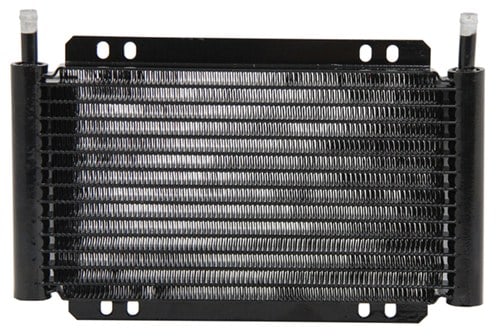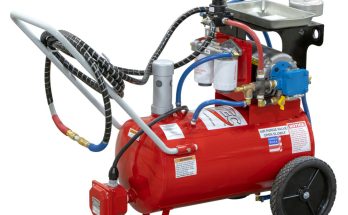Transmission coolers are designed to disperse heat from the hot fluid flowing through it. For example, a tube and fin style transmission cooler has fins throughout the body of the cooler to help heat escape the tubes.
The incoming air, which is at a lower temperature than the fluid in the cooler helps the fluid cool down before going to the transmission. Air flow is on of the biggest factors in allowing your transmission cooler to do its job, as long as it is placed in a spot in front of the vehicle.
Because of this, most vehicles can benefit from mounting the transmission cooler in front of the air conditioning condenser or radiator to get as much incoming air as possible, and use the cooling fans when at idle.
If you are in a situation where you cannot use a cooler in front of the car where it can get enough air flow, it is recommended to use a cooler with a fan. Most common cars will not need to deal with a remote mounted transmission cooler with a fan based on the simplicity of most cars.
Another reason a transmission cooler stays cool is because it is independent of the cooler in the radiator. Factory transmission cooler are mounting inside the vehicle’s radiator. While this is fine for most situations, the transmission fluid will often run hotter. The hot coolant in the radiator can sometimes increase transmission temperatures, and almost act like a heater. It is not uncommon to see temperature drops of 20-30 degrees after installing an transmission cooler.
Conclusion
Transmission coolers are able to stay cool because they utilize air flow that passes through the cooler, which is colder than the fluid running though the cooler. The air passes through cooling fins or plates where the cooling flows and can cool very efficiently.
Also, the fact that external transmission coolers are mounted outside of the radiator helps them just cool transmission fluid. Transmission fluid in a radiator can be noticeably warmer because it shares surface space with the engine’s hot coolant.




